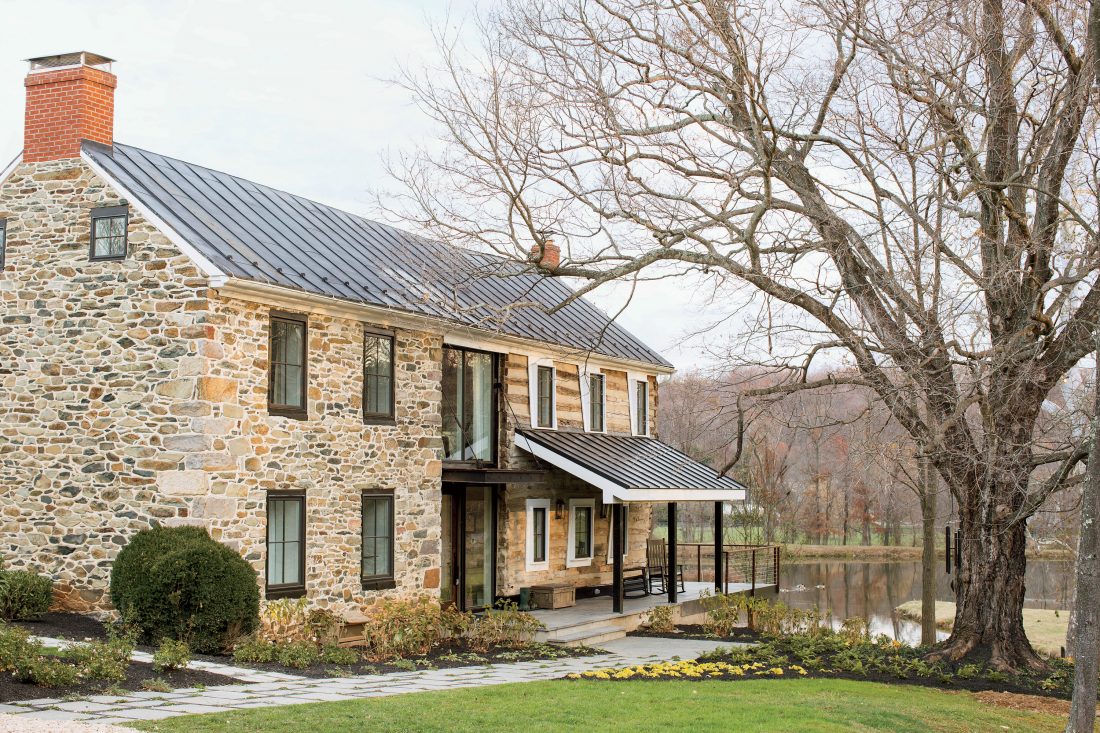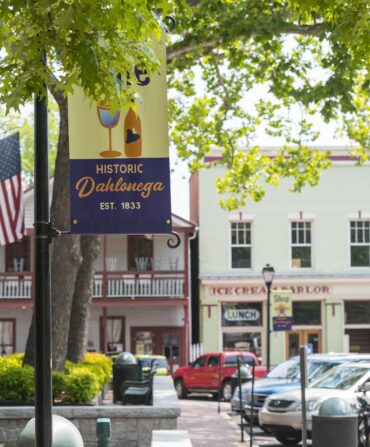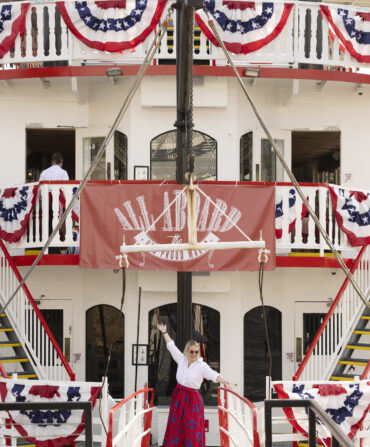The moment they laid eyes on the old log cabin and stone farmhouse, Beth and Randy Russell knew they had found a rare historical gem. A hankering for a deeper connection to the land had led them on a farm-hunting excursion into the rolling hills of Loudoun County, forty-five minutes west of their suburban Washington, D.C., home. But could they update the long-unoccupied property to suit the twenty-first-century needs of their busy family of five without blotting out the past?
“I love history,” Beth says, “but I don’t want to feel like I’m living in a museum.”
For guidance, the Russells turned to Mark Turner, a residential designer and builder based in Falls Church, Virginia; and Cortney Bishop, an interior designer in Charleston, South Carolina. Together, they designed a renovation that is both true to the farm’s architectural heritage and to the Russells. Farming is in the family’s blood: Beth migrated to D.C. from rural southern Indiana, and Randy, a farm lobbyist and former chief of staff for Ronald Reagan’s agriculture secretary, hails from sod-busting Midwestern homesteaders.
The Virginia house’s new entry best illustrates the designers’ fresh approach. For nearly three hundred years, occupants and their guests ducked through a door in the original circa-1730 log cabin. The cabin entry remained even after a fieldstone wing was added a hundred years later eight feet to the west, dogtrot-style but for the clapboard hyphen joining the structures. Turner removed it, fusing the log and stone buildings with a modernistic band of glass and steel that doubles as an entrance hall.
“The stars of this show are the old wood and stone,” Turner says, explaining the unorthodox decision. “They tell the story of this rare juxtaposition of buildings, both the same scale, separated by eight feet and a hundred years. The architecture was already here. We brought in the glass to highlight the historic textures.”
That first bold stroke set the tone for the entire renovation. The balance of historic and clean-lined contemporary captures the perfectly compatible contradictions that the Russells embody—their love of city and country, a seriousness of purpose that never overshadows their embrace of spontaneity.
Bishop, who also finds inspiration in history and organic textures, stuck to an earthy palette and all-natural materials—slate, wood, plaster—inside. The farmhouse rooms feel thoughtfully edited for quality. Take the living room sofa, an upholstered showpiece with small but sinuous walnut arms and cast-bronze feet from BDDW in New York. “If you added English arms and casters, it would look more traditional,” Bishop says. “But with those small modern touches it becomes fresh and new. I wanted every piece to be an heirloom.”

Photo: Patricia Lyons
Making History
A gravestone replica found on the property hangs above the living room mantel.
Modern treatments for historic objects continue throughout the house, from an old iron hayloft pulley discovered in the barn that hangs as an art object on the log wall of the living room to the two-thousand-pound gravestone found on the property and mounted with rebar over the mantel. Turns out the cast-concrete replica was fashioned decades ago to replace the crumbling headstone of Captain John Washington, a great-uncle of the founding father. Scrapped because of a small flaw, it somehow ended up in the weeds behind the barn. And it took Turner and a crew of eight a full day to hoist into place.
Though the house renovations are complete, the Russells’ vision for their Virginia farmstead continues to take shape. They planted forty elm trees in an ongoing effort to honor one of the property’s early-twentieth-century owners, the agriculturist and author J. Russell Smith, who penned his influential 1929 book, Tree Crops, on the property. On the site of an old grain silo, the couple built a shiny new one, which they’re converting into an enviable entertaining space—four stories containing a whiskey room, a spa, and guest quarters. A bridge connects the silo to the farm’s nineteenth-century barn, which the Russells are reinventing as another gathering spot.
“There is something magical about this farm,” Beth says. “The spirit of the place creates an environment for coming together, and we have felt from the get-go that is not just for us: We want to share it as much as we can.”









